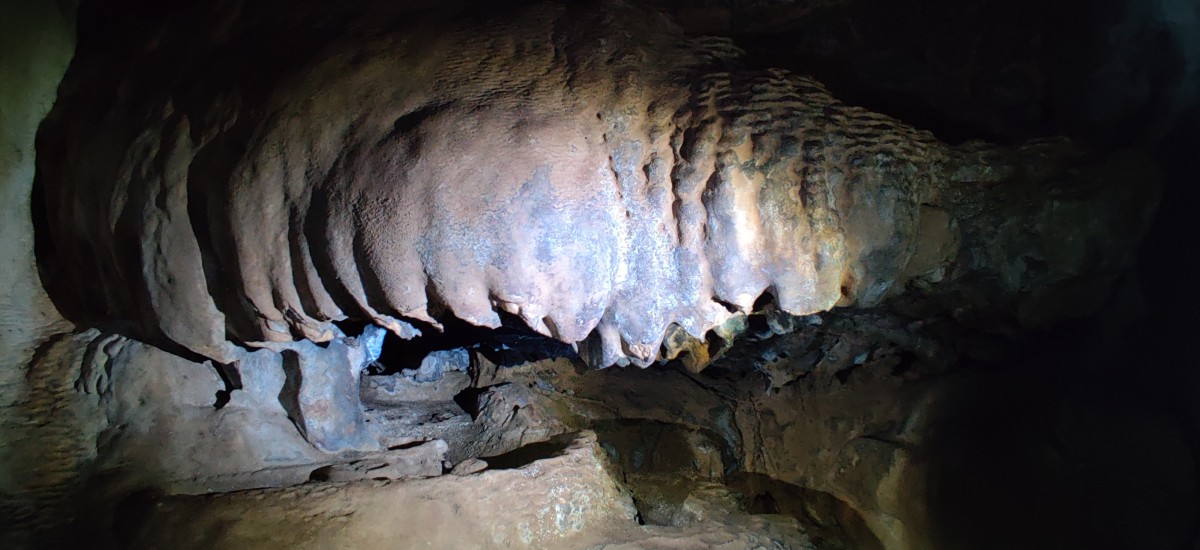
Isotopes reveal the ancient marvel of water engineering
- Select a language for the TTS:
- UK English Female
- UK English Male
- US English Female
- US English Male
- Australian Female
- Australian Male
- Language selected: (auto detect) - EN
Play all audios:
A thousand years ago, severe droughts and floods swept South India, prompting the Chalukyas of Kalyana, the ruling dynasty, to build sophisticated rainwater harvesting systems. This
adaptation was a pivotal advancement, a study1 using stalagmite isotopic data and archaeological records reveals. Extreme monsoon variations — far more intense than today — profoundly
impacted several other ancient communities and kingdoms in the Deccan across three millennia. In response, they pioneered advanced irrigation technologies and diverted river waters through
canals for rainwater harvesting, ensuring water security and resilience, according to a team of scientists at the Indian Institute of Tropical Meteorology (IITM), Pune, and archaeologists at
the Yogi Vemana University, Kadapa in Andhra Pradesh. “While present-day hydrological technology, such as major dams, is crucial for advancing agriculture, small-scale irrigation features
like tanks and wells, known to be adopted by medieval kingdom rulers, can significantly mitigate severe drought or famine,” the study added. Paleoclimate scientist, Atreyee Bhattacharya at
the University of Colorado, Boulder, in the United States, says such deep time studies of climate-society linkages help secure some large-scale connections between climate and society that
may not be captured in models that address shorter timescales. “Statistical modeling is where such high resolution data can be very powerful,” she says. MINERAL MOUNDS TELL TIME IN THE PAST
As rainwater trickled into the Kadapa caves of the parched Rayalaseema region in Andhra, dissolved minerals accumulated steadily, a centimetre every century— forming icicle-like,
seashell-hued stalagmites rising from the cave floors. The minerals in the stalagmite growth rings locked in chemical signatures of that time's environmental and climatic conditions as
rainwater fell on the surface, serving as timekeepers. The isotopic composition of oxygen, a chemical signature, within these growth zones – a hundred times thinner than a tree ring –
preserves a record of local rainfall patterns. Using the isotopes, IITM’s Naveen Gandhi and colleagues reconstructed changes in the Indian summer monsoon rainfall across 3200 years. “Just 18
cm of the stalagmite yielded 1,800 samples with data points detailed enough to track changes almost year by year from 1200 BC,” says Gandhi. The rainfall evidence in the dripstones
synchronized with archaeological records of settlement patterns from the historic Brahmagiri, Maski, and Tungabhadra corridor sites along the Tungabhadra river in the Krishna basin
straddling Karnataka, Telangana, Andhra Pradesh and Maharashtra — states in the Deccan embroiled in water disputes. MAPPING RAINFALL EXTREMES AGAINST ARCHAEOLOGICAL RECORDS For instance,
settlements farther from water bodies or rivers, such as Sanganakallu and Maski (in Karnataka) were deserted during droughts lasting 40 to 50 years. In contrast, during the Iron Age, people
in settlements near rivers and bodies of water, such as Brahmagiri and Kadebakele, moved from hilltops to riverbanks or next to water, and continued inhabiting these areas. Residents
deserted low-lying or cyclone-prone areas on India’s eastern coast during high rainfall periods. Successors built on knowledge, improving water management. From the third century BCE to the
fifth century CE, the Pallavas, Mauryas, and Vishnukundinas established tanks to ensure water supply during drought. Major empires like the Mauryans and Sātavāhanas struggled to maintain
irrigation during internal conflicts. “Socio-political factors may also have contributed to these declines,” says archaeologist, Siva Kumar Challa. Between the mid-sixth and eleventh
centuries, the Chalukyas of Badami and Kalyani (present-day Karnataka) raised numerous canals, tanks, and reservoirs to counter frequent droughts. This commitment to water management reached
its zenith between 1000 and 1330 CE, a period celebrated as the golden era of tank construction under the Chalukyas of Kalyani. Inscriptions and literature from this period indicate that
the Chalukyas prioritized artificial irrigation — the Telegu poem _Haravilasamu_ by Srinatha, mentions reservoir-based irrigation by damming valleys between two hills. From the 14th to 17th
century CE, during some of the driest years in the last three millennia, tanks, reservoirs, and canals flourished to support agriculture under the Kakatiyas and the Vijayanagara Empire.
Notably, the Vijayanagara kings transformed valleys into large tanks and commissioned major dams like Haridra and Tungabhadra. A Sanskrit inscription from 1369 CE mentions the construction
of a tank by prince Bhaskara Bhāvadūra, highlighting the significance of large-scale irrigation projects. The dataset aligns closely with others documenting major climatic changes in the
region. Compared to the last 150 years of observational rainfall data from the India Meteorological Department, it accurately captures high and low rainfall periods. Next, the researchers
plan to make the dataset available with the global Speleothem Isotopes Synthesis and Analysis (SISAL) paleoclimate database for a wider community of researchers.